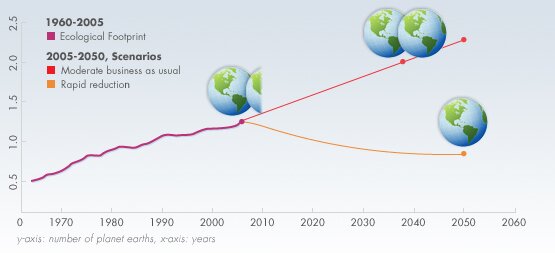Posts Tagged ‘Sustainability’
How sustainability changes the rules of branding
Does sustainability change the rules of branding? I believe it does and describe why and how in a guest column today for Sustainable Business Oregon. Here’s an excerpt:
In branding, the job of connecting emotionally is typically left to marketing and advertising. History suggests that works for many product categories where competitive differentiation is scant and great advertising is their only hope of making consumers care.
Once a company starts hanging its hat on sustainability, however, the rules change. Branding is no longer a game of emotions alone. It becomes a game of facts and emotions. That takes the practice of branding outside the narrow zone of marketing and advertising and into the broad realm of operations and employee engagement to ensure sustainability practices are, in fact, implemented.
My piece also includes the 10 steps to building a sustainable brand. Check it all out and let me know what you think!
Greater sin: greenwashing or ignoring sustainability?
A business that strives to be sustainable but falls far short on its sustainability promises is committing “a greater sin” than a business that ignores sustainability but keeps its promises. That’s one of the findings of the new Sustainability + Branding Survey of sustainability advocates in business.
![]() My partners and I in the Sustainable Branding Collaborative have released a summary report of the survey, which we conducted in late 2010. I encourage you to download a copy and see what your peers have to say.
My partners and I in the Sustainable Branding Collaborative have released a summary report of the survey, which we conducted in late 2010. I encourage you to download a copy and see what your peers have to say.
When asked which is the “greater sin,” 78 percent of respondents said it’s worse for a business to make an effort to become more sustainable but allow its publicized promises on sustainability to far exceed its actual practices. Only 22 percent said it’s a greater sin for a company to make no claim or effort to become sustainable but otherwise deliver on all of its promises.
What’s clear from the survey is business executives committed to sustainability loathe greenwashing and value integrity. The findings validate the importance our group’s branding approach places on ensuring the sustainability practices of your employees and organization deliver what your brand promises.
Branding advice from sustainability proponents
The survey respondents’ top pieces of advice for companies branding more sustainable products and services include:
- Be honest, be authentic, “walk your talk”
- Build a solid sustainability foundation using methods such as The Natural Step Framework, whole systems thinking and triple-bottom-line accounting
- Measure, verify and certify sustainability claims, preferably using a third party
- Look at branding as a critical foundation for business success, not as a luxury
Does sustainability change branding?
Among other findings, respondents were almost evenly split on the question of whether the practice of branding should be different for an organization that is striving to become sustainable: 53 percent said no, 47 percent said yes.
Branding is branding, say the respondents who believe the practice of branding should be the same — regardless of whether a business is on the sustainability path. Those who believe the practice should be different say sustainable brands need to place a greater emphasis on authenticity, honesty and delivering on the brand promise than traditional brands do. They also believe branding must be approached as part of a comprehensive, company-wide effort to be sustainable.
No matter how you go about branding your business or product, the values of honesty, transparency and keeping your promises are paramount. Whether you believe these values can be instilled through traditional branding methods or require new approaches, the sustainability proponents in this survey strongly advise you to do what you say.
About the survey
The Sustainable Branding Collaborative conducted the Sustainability + Branding Survey November 10-17, 2010. The survey gathered online responses from 291 innovators and early adopters in the sustainable business movement.
5 ways brands can engage on climate change
2010 tied 2005 as the hottest year on record, according to reports last week. The news came as flood waters overwhelmed Queensland, Australia and mudslides killed hundreds in southeast Brazil. The natural disasters were made worse by global warming, scientists told ABC News.
Meanwhile, a new poll shows only 40% of Americans believe global warming is caused by human activity. And New York Times environmental blogger Andy Revkin said in 2010 “global warming, the greatest story rarely told, had reverted to its near perpetual position on the far back shelf of the public consciousness — if not back in the freezer.”
Is that how it is for you? Is climate change even on your radar screen as a business? And if it is, are you doing something about it? Or are you treating it like some harmless object along the distant horizon?
What your brand can do
I won’t make an argument for why you or your business should care about climate change. I’ll leave that to authors like Bill McKibben, whose 2010 book “Eaarth” is an unsparing description of a world already scarred by global warming and a guide to how we must now live in it.
What I would offer are five ways your business brand can engage stakeholders on climate change. After all, a large minority of Americans believes humans are causing global warming and increasing numbers of customers are holding business accountable. On the opportunity side, brand differentiation around climate change is there for the taking in many markets.
- Brand as promise: You can’t waffle on climate change. Choose to believe the scientific evidence and climate scientists like this one who states unequivocally, ”We’re observing the climate changing – it’s happening, it’s real, it’s a fact.” Take a stand. Let your stakeholders know your business cares deeply about the trajectory of the world’s climate. Then show them what you’re doing about it through your products, services, operations and culture.
- Brand as meaning: Customers, employees and, indeed, all stakeholders are in constant search for meaning. That’s life. Connect what you’re doing on climate change to what matters to your stakeholders. And what matters to most of us is that we and those we care about achieve happiness and avoid suffering. The climate is now on a very unhappy path. Be an example for a different way forward.
- Brand as emotion: We all experience basic emotions such as joy, love, anger, sadness, surprise and fear. For many of us, the thought of climate change overwhelms us and triggers undesirable emotions. How much more desirable is a brand that taps into the joy and satisfaction in caring for our planet and its current and future inhabitants?
- Brand as story: Humans connect through stories. It’s how we entertain, educate, preserve our cultures and instill values. Your brand is a story. Place it within the Mother of All 21st Century Stories — climate change — and watch as new, meaningful and emotional connections get made.
- Brand as experience: No matter what we tell others about our brands, what determines their fates are the experiences others have of them. When someone interacts with your business or product, they experience your brand as a promise kept or a promise broken. Promise to be on the right side of climate change and then give others the experience of standing with you — and you with them — in creating a world hospitable to all.
Taking the road less traveled on consumption
This article first appeared in Sustainable Industries, September 28, 2010.
The latest drop in consumer confidence will no doubt discourage many businesses. After all, consumer spending comprises 70 percent of U.S. Gross Domestic Product.
If individuals have greater confidence in the future, they buy more stuff. Businesses make more money and hire more employees. That increases consumers’ ability to purchase more things, their confidence rises and the virtuous cycle continues.
Until it stops.
And stop it did two years ago this month after Lehman Brothers collapsed into bankruptcy and sent stock markets and the economy into a tailspin.
With today’s overall economy only modestly improved, we in business today find ourselves at a crossroads. Do we continue down the rutted but familiar road of a materialistic marketplace, hoping the road will soon smooth out? Or do we choose an alternate route to prosperity this time?
The dead end of material consumption
It didn’t take the Great Recession to teach many of us the path of consumption we’ve traveled for more than a century is ultimately a dead end. That’s been apparent for some time; we have only one planet to sustain our pace of natural resource consumption, and we need two or three at the rate we’re going.
What isn’t apparent is whether our experience of the Great Recession will fundamentally change the way we do business. Ask yourself:
- Is your business hunkering down, waiting for the return of the free-wheeling, free-spending consumer?
- Or are you using this period to rethink your business model, what you produce and sell and how you measure success—consistent with a resource- and financially constrained age?
Confronting ‘the materiality paradox’
The last time we suffered a downturn like this was the early 1980s. When we emerged from that recession, Americans went on an unprecedented spending and consumption binge that continued largely unabated until two years ago.
The era gave rise to what sociologist Juliet Schor describes in her excellent new book, “Plenitude,” as “the materiality paradox.” That is, as products became more valued as “symbolic communicators,” they grew more reliant on fashion and novelty, speeding the cycle of consumption.
“People buy more products and turn them over more quickly,” she writes. The paradox is we value goods less today, but we consume more of them to satisfy our natural desire for social meaning and individual expression.
The non-material consumer economy
If past behavior is the best predictor of future behavior, then it’s likely Americans will return to what we do better than anyone: consume. But nowhere is it written that what or how much we consume has to be identical to the last 25 to 30 years. A consumer economy doesn’t have to mean “a-consumer-of-materials economy.”
Much of what individuals and businesses “consume” is far more about experiences than stuff, such as:
- education and training, of all types
- fine arts, crafts
- music, theater, dance and other performing arts
- movies, reading, sports and other entertainment
- travel
- hiking, bicycling, skiing and other recreational activities
- digital gaming and other virtual products
That isn’t to say these and other experiences don’t have associated sustainability issues. The business challenge is to dematerialize the production, promotion and delivery of these experiences as much as possible. But businesses enjoy a head start on sustainability when their core products are experiences instead of goods.
Makers of goods can gain a similar advantage through “cradle-to-cradle” techniques such as upcycling (turning waste material or other used or useless products into new, higher-value goods).
Design for environment and sustainable design practices minimize raw material use and waste. But the jury is still out on whether better, smarter design is the “silver bullet” solution to over-consumption. At some point the prevailing materialistic mindset also has to change.
The road less traveled
The point is: A consumer economy isn’t unsustainable by definition. It depends on what and how much gets consumed. Americans are deeply conditioned to satisfy their desire for happiness and meaning by accumulating possessions. This reflects the persuasive power of professions like mine — branding and marketing — more than some genetic predisposition to shop.
Dislodging materialism as the economic status quo won’t be easy. But if enough businesses choose the road less traveled, the next three decades will look far different from the last three.
Many sustainability leaders in business are already re-conditioning customers to consume less and differently. They respect the material limits of our planet. And they recognize what customers ultimately desire — happiness, security, belonging — isn’t found on store shelves and never goes out of fashion.
Like sustainability, branding needs image change
A new study indicating the recession has crowded out concern for the environment prompted the New York Times to ask: “Is ‘thinking green’ an economic luxury?”
Uh, yeah. Not that it should be. If ever there was an economic necessity it would be to think green and adopt sustainable practices. But that’s just me speaking. My professional niche is sustainable branding, so I see business through the lens of sustainability. Plenty of recent studies show the continued gap between intention and action on sustainability among individuals and businesses.  Neither thinking nor acting green is considered essential.
Neither thinking nor acting green is considered essential.
Like sustainability, branding is viewed as a luxury by most in business. Ironically, that’s farthest from the truth in lean times like these. When acquiring and keeping customers is hardest, a business can least afford to ignore what creates competitive distinction and customer relevance — namely, its brand.
Branding’s image problem
Branding suffers from an enduring image problem. Mention branding, and dollar signs come to the minds of most executives. In a recession, that’s a show-stopper. The problem is branding is equated with design, advertising, marketing communications — all of which cost money. But brand promotion is only part of the branding equation — the most expensive part.
Yes, at some point, you have to build brand awareness, preference and loyalty. And that requires a financial investment in marketing. But the most essential components of building your brand — defining what it is and baking it into your culture, operations and products — are really just best management practices.
Branding is little different from other standard best practices, such as developing financial budgets, employment policies or product development plans. Sure they take some time and money to produce, but that’s simply the requirement of being in business, no matter the economic climate. So it is with branding.
When businesses declare branding a luxury they can’t afford, they are unwittingly saying, “We aren’t going to take the time to decide who we are as a business, what we stand for, what makes us distinct and why we matter as a company. And we’re not going to worry about whether we as managers and employees are keeping our promise as a business to customers and all our other stakeholders.”
Consequences of brand neglect
I used the word “unwittingly” because I don’t believe most business executives understand the consequences of neglecting their corporate brand until more prosperous times return.
 It’s one thing to slash advertising budgets or postpone the redesign of the firm’s visual identity. It’s quite another to lose sight of what makes your business distinct and relevant now, today, in an economy fundamentally different from just two years ago. Or to postpone accountability for whether your business is consistently delivering the customer experience you promise.
It’s one thing to slash advertising budgets or postpone the redesign of the firm’s visual identity. It’s quite another to lose sight of what makes your business distinct and relevant now, today, in an economy fundamentally different from just two years ago. Or to postpone accountability for whether your business is consistently delivering the customer experience you promise.
From the inside looking out, your brand is your over-arching promise to stakeholders. From the outside looking in, your brand is the image stakeholders have of your business, based on direct experience or word-of-mouth. Any business with customers or employees has a brand image. The question is whether the business understands and cultivates that image or leaves the task to others, such as competitors who are only too willing to tell your story for you.
At its most basic, branding means ensuring the experience aligns with the promise. That’s not accomplished by simply spending more money on clever advertising or glitzy marketing events. Much more important is being clear about what your promise is as a company and how your employees, products and practices deliver on it day after day, regardless of the economy.
Branding as necessity
Seen from this perspective, branding is no luxury. And it doesn’t have to be about spending big bucks. What it does require is time and commitment from senior leadership to ensure the brand:
- firmly establishes competitive distinction and customer relevance
- is understood and fulfilled across the company
- is positively perceived by customers, employees and other key stakeholders
Branding is an all-company, everyday exercise in earning and keeping customers and creating competitive advantage. When times are toughest, attention to your brand becomes more crucial than ever.
Does branding need to be on your list of business necessities? If so, I invite you to get in touch and explore how to make that happen.
10 steps to employee engagement in sustainability
Today’s guest post is by Eric Brody, a member of the R.Bruer Sustainable Branding Collaborative. Eric is founder and principal of Shift Advantage, a sustainability consultancy in Portland, Ore. He was previously the sustainability business integration manager for Nike and sustainability manager for Nau, a technical outdoor and urban clothing company recognized for its innovative sustainability practices.

Much has been written about how to involve employees in more environmentally friendly office practices, such as reducing paper consumption, carpooling, turning off computers at night, recycling, and composting food scraps. As important as these and many other behaviors are to greening an office, they only take a business so far down the sustainability path.
If your vision is to build a sustainable business operating from a triple-bottom-line (people, planet, profit) philosophy, then sustainability is core to your business strategy. Your challenge involves more than green office practices. It means creating a business whose success is measured by its social, environmental and financial contributions.
Executives can only achieve their vision of a sustainable business by engaging and involving their work force. They need everyone in their companies on board. The question is how to engage all employees in the practice of strategic sustainability.
Fully engaging employees in strategic sustainability
At the risk of over-simplifying what can be a complex undertaking, I’ll offer a 10-step approach to employee engagement:
- Develop a strategic business plan that clearly articulates your social, environmental and financial objectives and strategies over a period of up to five years. I’ve worked with companies that set very aggressive stretch goals such as zero waste or zero carbon footprint by a certain date to ones that set more pragmatic goals such as reducing waste or the carbon footprint by a certain percentage.
-
Share your business plan with each group or department. Ask each group to review their individual plan and goals with the intention of incorporating or expanding the practice of sustainability into their metrics of success. Each unit may be different: Purchasing may adopt social and environmental performance requirements in their procurement contracts with suppliers. Product development and design may adopt design for environment (DfE) techniques into their processes.
 This type of thinking leads to innovations such as creating products that are lighter, repairable, utilize rechargeable energy sources, use energy more efficiently, or require low impact cleaning by the user. Accounting may investigate new models for measuring and tracking social and environmental impact, in addition to financial performance such as the greenhouse gases associated with business travel.
This type of thinking leads to innovations such as creating products that are lighter, repairable, utilize rechargeable energy sources, use energy more efficiently, or require low impact cleaning by the user. Accounting may investigate new models for measuring and tracking social and environmental impact, in addition to financial performance such as the greenhouse gases associated with business travel.
- Set department goals, both short term and long term (quarter, annual, three-to-five year). Companies may choose to make their environmental and social goals based on company totals or on a per unit or per dollar basis.
- For each job function and individual, determine responsibilities and expectations related to achieving the department’s and the overall business’ sustainability goals. As much as possible, make this an exercise of co-creation between a manager and an employee. You want every employee feeling enthused and empowered to make a difference. You also want to let employees know their contributions to sustainability will be a factor in their annual performance reviews (see Step 7). Set goals that are SMART: specific, measurable, attainable, realistic, timely.
- Provide training for each employee to grow competency and skills related to improving their individual contributions to your triple bottom line. Where possible, develop or seek sustainability training that is domain-specific, e.g., marketing, product development, manufacturing, customer service, human resources. This can include sending your employees to conferences or workshops or participating in industry or cross-industry collaborative working groups that are addressing specific issues such as water, logistics, fair labor and energy efficiency.
- Check-in regularly (weekly, monthly, quarterly) to monitor progress on the sustainability front, such as in manager/employee one-on-ones or staff meetings. This enables mid-course corrections and prevents year-end disappointments in group or individual performance.
- During annual reviews, evaluate each employee’s performance related to his or her individual and group sustainability goals. This reinforces the importance of achieving these to the company.
- After their performance reviews, ask employees to produce new or revised 12-month SMART goals to help their departments and the company achieve sustainability objectives. Be sure to share with employees any changes to business or department plans so they can align their individual efforts accordingly.
- Throughout the year, acknowledge and celebrate individual and group sustainability achievements across the company. Consider contests that motivate individuals and groups to out-perform each other and help make the sustainability journey about having fun and making a difference.
- Work with each department to engage their stakeholders and report publicly the achievements and challenges. This may include summits with your supply chain, reporting achievements and challenges to the public through corporate responsibility reports or websites or engaging customers through customer surveys and communications. The Global Reporting Initiative (GRI) provides a thorough framework for corporate responsibility reporting.
We have seen great success with companies that take these steps to fully engage their employees. This strategic approach moves sustainability from theory to practice within a company. The more engaged employees are, the more they will help your business innovate, achieve industry leadership, reduce costs and increase market share.



